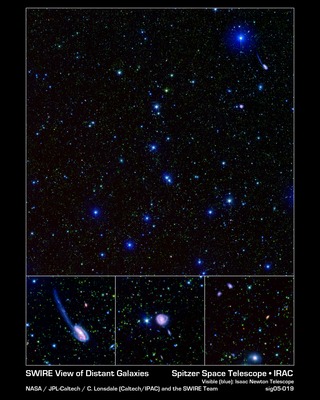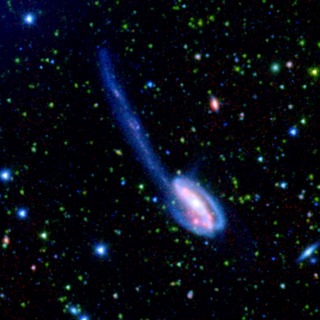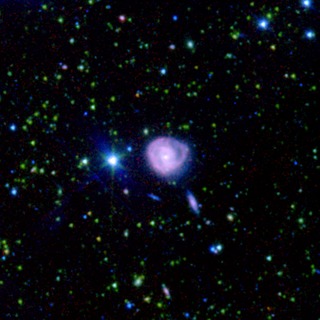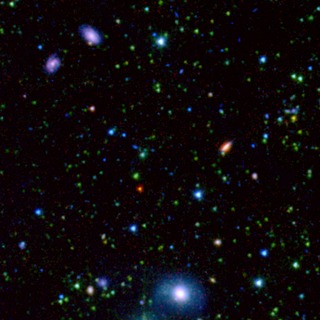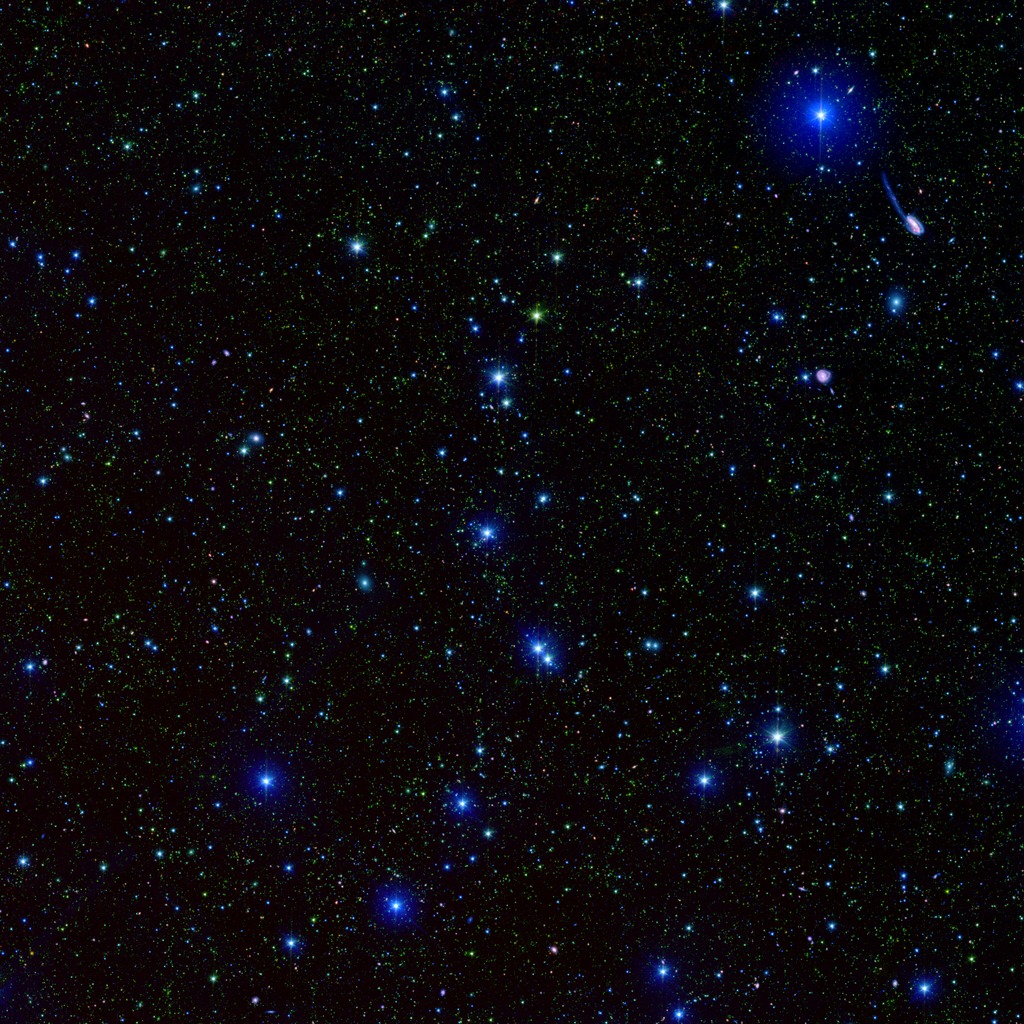
Credit: NASA/JPL-Caltech/C. Lonsdale (IPAC/Caltech) and the SWIRE Team
Observation • October 27th, 2005 • sig05-019a
sig05-019a
This spectacular infrared image, taken by the Spitzer Wide-area Infrared Extragalactic (SWIRE) Legacy project, encapsulates one of the primary objectives of the Spitzer mission: to connect the evolution of galaxies from the distant, or early, universe to the nearby, or present day, universe.
This picture depicts one-tenth of the SWIRE survey field called ELAIS-N1. In this image, the bright blue sources are hot stars in our own Milky Way, which range anywhere from 3 to 60 times the mass of our Sun. The fainter green spots are cooler stars and galaxies beyond the Milky Way whose light is dominated by older stellar populations. The red dots are dusty galaxies that are undergoing intense star formation. The faintest specks of red-orange are galaxies billions of light-years away in the distant universe.
The observed SWIRE fields were chosen on the basis of being "empty" or as free as possible from the obscuring dust, gas, and stars of our own Milky Way. Because Earth is located within the Milky Way galaxy, there is always a screen of Milky Way objects blocking our view of the rest of the universe. In some places, our view of the larger universe is less obscured than others and for the most part is considered "empty." These are prime observing spots for astronomers interested in studying objects beyond the Milky Way.
ELAIS-N1 is only one of six SWIRE survey fields. The full survey covers 49 square degrees of the sky, equivalent to the area covered by about 250 full moons.
The SWIRE image is a 3-channel color composite, where blue represents visible green light (light that would appear to be blue/green to the human eye), green captures 3.6 microns, and red represents emissions at 8 microns.
Interesting Note: From the Earth the SWIRE image (top image) can be seen in one square degree of sky, or a patch of sky that is approximately the size of a pea held out at arms length.
About the Object
- Name
- ELAIS-N1
- Type
- Cosmology > Morphology > Deep Field
- Cosmology > Morphology > Deep Field
Color Mapping
| Band | Wavelength | Telescope |
| Optical | 550 nm | |
| Infrared | 3.6 µm | Spitzer IRAC |
| Infrared | 8.0 µm | Spitzer IRAC |
Astrometrics
- Position (J2000)
- RA =16h 6m 37.0s
- Dec = 54° 59' 45.9"
- Field of View
- 0.0 x 0.0 arcminutes
- Orientation
- North is 44.1° right of vertical
